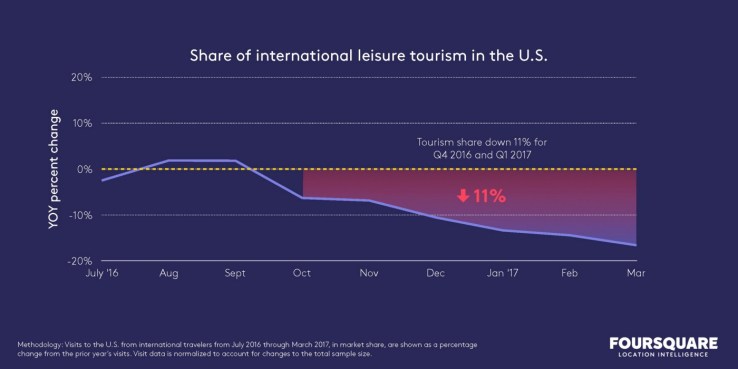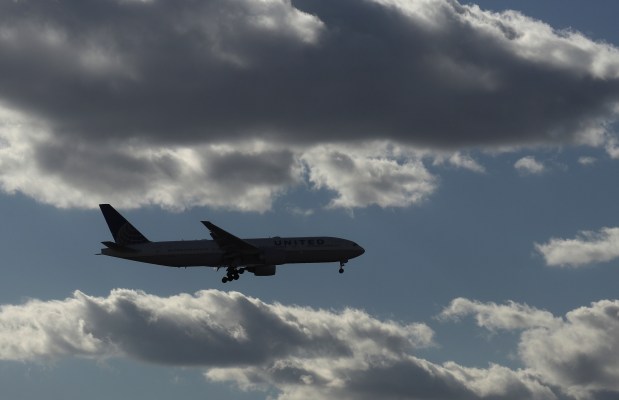International tourism to the U.S. is down, according to Foursquare location data.
Using data from 13 million users (who have opted in to always-on location trails), Foursquare can examine who walks in and out of 93 million public places across the globe. According to the firm, the U.S. market share of international tourism started to drop in October 2016, falling by 6 percent year-over-year. It has steadily dropped since, sinking as low as -16 percent in March 2017.
From October 2016 (the start of the decline) to March 2017, average decrease in U.S. tourism market share was 11 percent YOY. Foursquare says there is no sign of imminent recovery.

These statistics represent ‘market share’ and not absolute figures. In other words, it examines the U.S. as a destination versus the rest of the world as a destination. It’s also worth noting that Foursquare was specifically looking at foot traffic associated with leisure travel and business travel, focusing more on stops made at venues (convention centers, restaurants, museums, stores, etc.) by folks who are visiting from abroad, instead of looking at hotel and airport data.
There are some obvious reasons for this and other not-so-obvious reasons.
To start, however, we can’t ignore the election of Donald Trump, which came with divisive rhetoric during the election and attempts to forge equally divisive policies after taking office. The travel ban, policies on ‘extreme vetting’ at airports, etc. have made the U.S. seem like a less welcoming place, and the effect it’s had on the tourism industry is evident.
Of course, there are other factors that may have contributed to the decline in tourism share, such as the growing strength of the dollar (making U.S. travel more expensive) or the weakening euro (making Europe more financially attractive as a destination).
Still, the U.S. is losing tourist activity to foreign destinations, and business travel in the U.S. is also suffering. Although Foursquare reports that business travel is up 3 percent in the U.S. YOY, that is below the trend line for other world destinations, which is closer to 10 percent growth.
Foursquare also found that residents of the Middle East and Central/South America are visiting the U.S. less frequently than those from Asia and Europe, which may have something to do with Trump’s travel ban, border wall, and other policy issues like electronics bans on flights.
The major takeaway:
While international travelers generally make up 10.7 percent of visits to Foursquare’s leisure categories, it estimates the decrease in tourism over the last six months could result in a 1-2 percent drop in YOY sales for U.S. retailers. And the hospitality industry is sure to feel that hit much harder.
